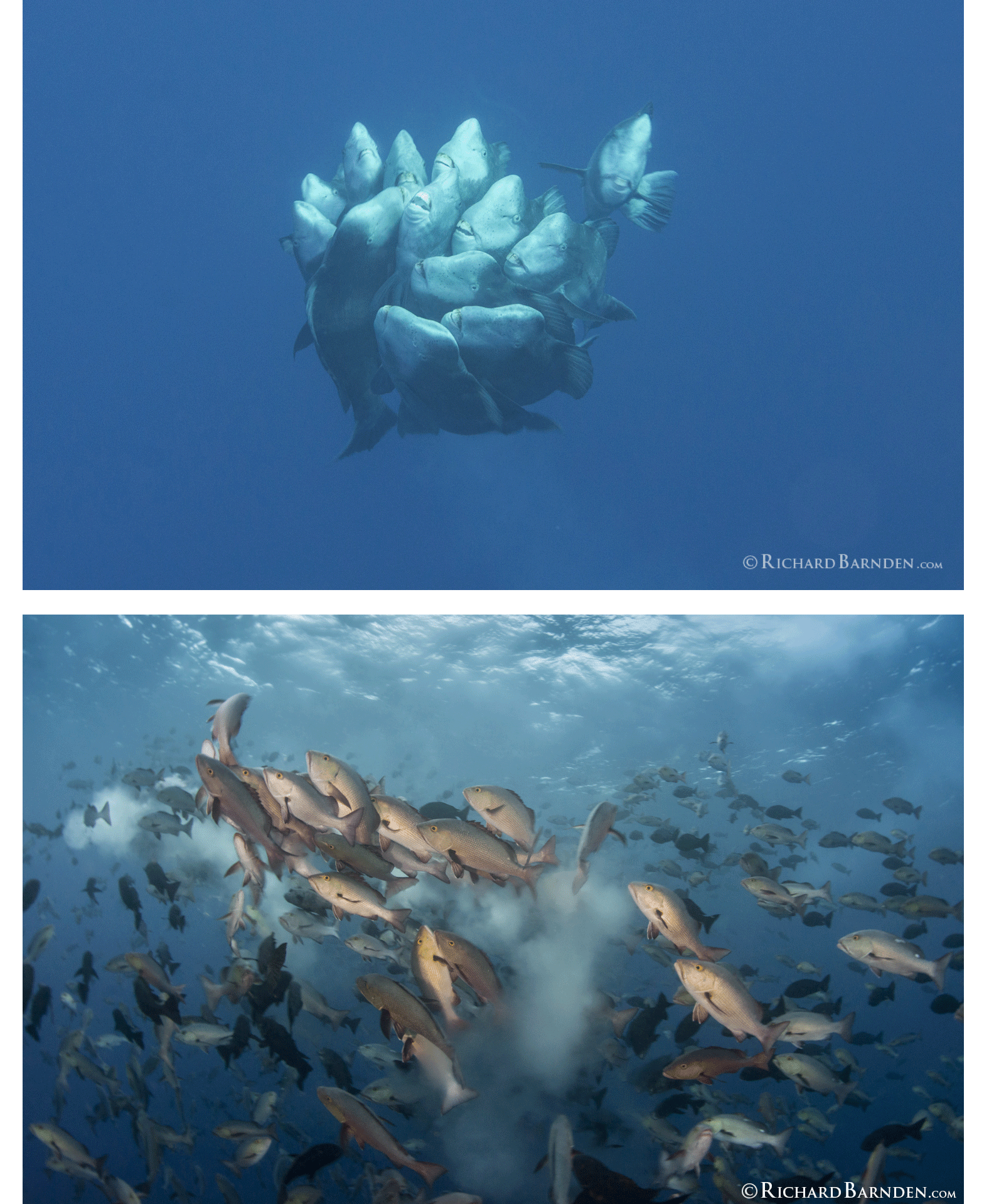Mass gatherings of animals are a spectacle to behold, from the recent super groups of humpback whales seen feeding off western South Africa to wildebeest herds that migrate across the African plains annually. However, congregating on masse can be a risky business if you are hunted for food or fur. The American passenger pigeon serves as a cautionary tale: once the most abundant bird in the North America the passenger pigeon was once an important source of food. Enormous flocks numbered in the millions and even into the billions! They migrated in search of food and breeding grounds; however, they were shot with such ease that by 1914 they were hunted to extinction. With the continued rise of global population there is an ever-increasing demand for food supplies. Demands on wild food stocks are strongest in our oceans.
Marine fish are the last remaining animals that we harvest in huge quantities from the wild. Globally, over 60% of fish stocks are fully fished and almost one third of stocks are overfished. Fish spawning aggregations numbering in the thousands or even millions are especially vulnerable to overexploitation. These aggregations tend to occur in specific areas with suitable geomorphology, habitat and ocean currents during spawning seasons that last typically up to 3 months. Science and Conservation of Fish Aggregations have identified 906 fish spawning aggregations from across the world and 79% of those were in decline.
One example of a fish that aggregates to spawn is the green bumphead parrotfish (Bolbometapon muricatum), the largest parrotfish in the world (up to 1.3m length). It was once abundant across its Pacific range, but having suffered from overharvesting and local extinctions, it is now a rarity on most Pacific coral reefs. Fishing embargos can help vulnerable fish stocks. In 2006, the Palauan government (Micronesia) banned bumphead parrotfish fishing. Since then the resident population is showing signs of recovery. The spawning behaviour seen here and below (recorded by EMB Young Ambassador Liam Lachs) is unique to Palauan bumphead parrotfish. One or two females and many larger males swim upward in a spawning rush, releasing gametes at the apex. Researchers have estimated that these spawning aggregations comprise approximately 1000–1200 individuals.
Most fish spawning aggregations have less protection than Palauan bumphead parrotfish. Unfortunately, there are indications that many commercial fish that spawn or migrate in aggregations are exploited during these sensitive times. Examples include Alaska walleye pollock (Theragra chalcogramma), Atlantic cod (Gadus morhua), capelin (Mallotus villosus), Atlantic mackerel (Scomber scombrus) and herring (Clupea spp.). Fisheries models and fisheries management need to incorporate information on the timing and location of fish spawning in order to move toward sustainability in the long-term. Hence, there is a need to address the scientific, social and logistical aspects of ocean and fisheries man agement.
agement.
In their recent publication, Navigating the Future V, the European Marine Board emphasise the multitude of stressors affecting our oceans today. Fishing on spawning aggregations is one of these, that contributes to the cumulative effects of land-based pollution, land reclamation, climate change, species range-shifts and fishing intensity, which may compromise our oceans and its resources in decades to come. Navigating the Future V gives an overview of the various challenges that modern society is faced with. It opens the discussion on the 4D ocean that changes through space and time, the multiple stressors acting on the oceans, and the best way to conserve and manage our marine resources sustainably. There is a call for cross-disciplinary action that bridges science with policy and that involves society, local livelihoods and traditional values in managing our changing oceans.
Photo Panel: Bumphead parrotfish (Bolbometapon muricatum) swimming upward in a spawning rush (above), and twin spot snapper group together in a spawning aggregation (below). Both aggregations are found in Palau, Micronesia. Photo credit: Richard Barnden
Blog story written by Liam Lachs (23 July 2019)